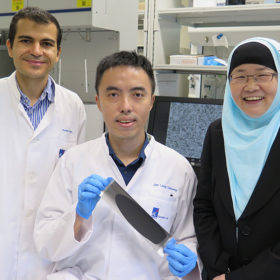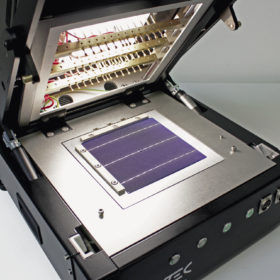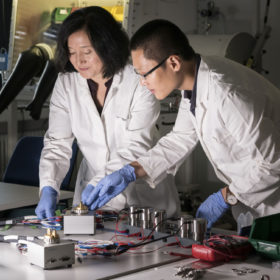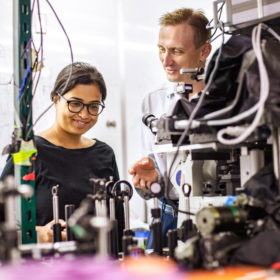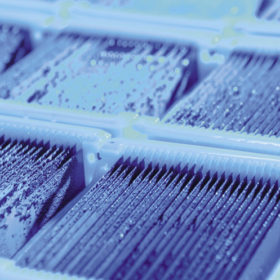UK: Give more power to regulators, says report
A report published recently by the United Kingdom’s National Infrastructure Commission says that the UK’s regulatory system must “adapt to meet the demands of the future” by providing new powers for regulators to ensure utility investments in sustainable infrastructure. The report notes that without such powers, the country will be unlikely to meet its target of zero emissions by 2050.
A new battery mix to prevent dendrites
Scientists at the United States Pacific Northwest National Laboratory have discovered a root cause of dendrite formation, which can cause battery failure and even fires in lithium-ion technology. With this new knowledge, the group is now working on electrolyte recipes that eliminate dendrite growth entirely.
A carbon scaffold to boost lithium-sulfur performance
Scientists at Singapore’s Agency for Science, Technology and Research have developed a new method to produce lithium-sulfur based cathodes which exhibit stable performance and high storage capacity over 200 cycles. According to the agency, this represents “a promising step towards the commercialization of lithium-sulfur batteries.”
JA Solar granted intellectual property rights for Ga-doping technology
The Chinese company has announced it has acquired intellectual property rights pertaining to various applications of gallium-doped silicon wafers in solar cell applications from Japanese company Shin-Etsu Chemical.
Calcium batteries cool down with new electrolyte
Scientists at Germany’s Karlsruhe Institute of Technology have developed a new class of electrolytes they say could bring calcium batteries – currently only a lab technology – a step closer to being a practical reality for energy storage.
Do lead batteries have a role in the clean energy transition?
The Consortium for Battery Innovation has outlined research goals for advanced lead-based battery concepts, claiming the potential of the technology is “nowhere near fully exploited”. The group, comprised of lead-battery industry stakeholders, says such devices can play an important role alongside lithium-ion and other storage technologies in electric vehicles, renewable energy storage and other applications.
A new generation of nano-architected, 3D solar cells
A group of scientists at Netherlands based research institute AMOLF have discovered a method for electrochemical printing at the nanoscale. With further optimizations, the group theorizes, the technique could allow for the development of new, three dimensional solar cells.
Questioning the quantum behavior of perovskites
Scientists at the University of Texas at Dallas have made a discovery they say has “altered the understanding of the fundamental properties of perovskite crystals”. Their findings could improve understanding of defect formation in perovskites, leading to devices with enhanced performance and stability.
The weekend read: Size matters
The latest development on the module front sees manufacturers adopting larger wafer sizes in order to reach the industry’s raised expectations for power output. Older “M2” wafers have been the standard in recent years but now appear to be on the way out. Several theories about optimal size are gaining ground, but the future direction of the standard is still far from clear.
Danish researchers bring some color to rooftop PV
Scientists led by the Technical University of Denmark have begun a project to design solar cells that can be produced in different colors with minimal effect on performance, making them suitable for building-integrated and other applications with aesthetic considerations.



